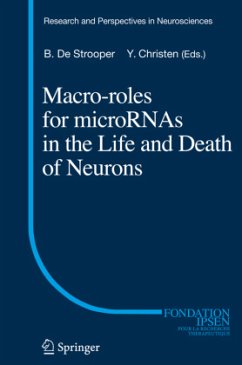The discovery of microRNAs has revealed an unexpected and spectacular additional level of fine tuning of the genome and how genes are used again and again in different combinations to generate the complexity that underlies for instance the brain. Since the initial studies performed in C.elegans, we have gone a far way to begin to understand how microRNA pathways can have an impact on health and disease in human. Although microRNAs are abundantly expressed in the brain, relatively little is known about the multiple functions of these RNA molecules in the nervous system. Nevertheless, we know already that microRNA pathways play major roles in the proliferation, differentiation, function and maintenance of neuronal cells. Several intriguing studies have linked microRNAs as major regulators of the neuronal phenotype, and have implicated specific microRNAs in the regulation of synapse formation and plasticity. Dysfunction of microRNA pathways is also slowly emerging as a potentialimportant contributor to the pathogenesis of major neurodegenerative disorders such as Alzheimer's disease and Parkinson's disease. These novel insights appear to be particular promising for the understanding of the very frequent and badly understood sporadic forms of these diseases as compared to the genetic forms. Thus, the better understanding of the implications of this novel field of molecular biology is crucial for the broad area of neurosciences, from the fundamental aspects to the clinic, and from novel diagnostic to potentially therapeutic applications for severe neurological and maybe psychiatric diseases.
Bitte wählen Sie Ihr Anliegen aus.
Rechnungen
Retourenschein anfordern
Bestellstatus
Storno








